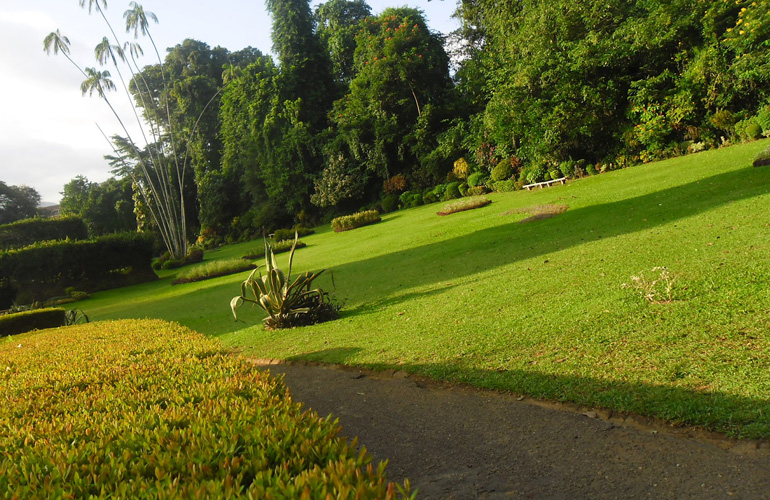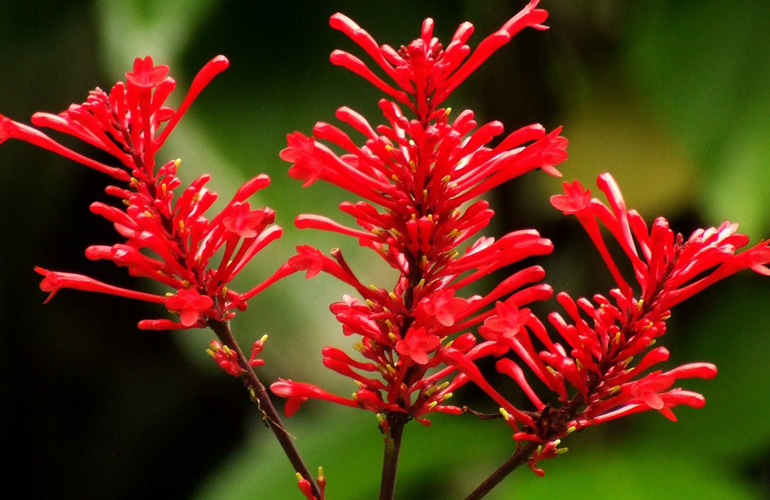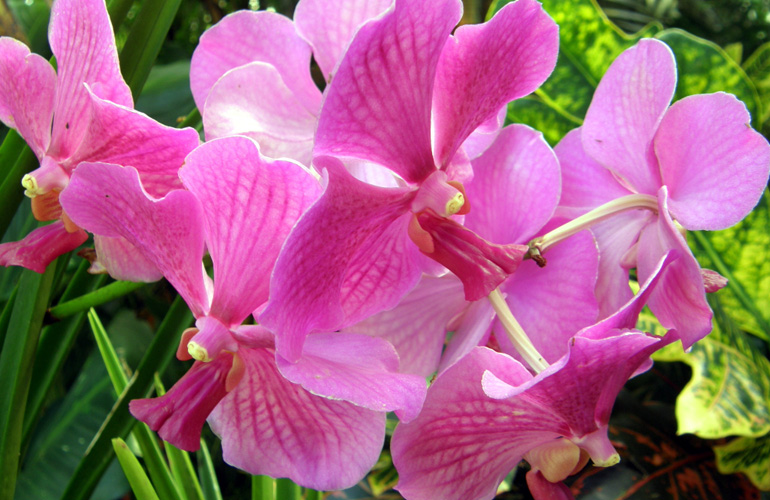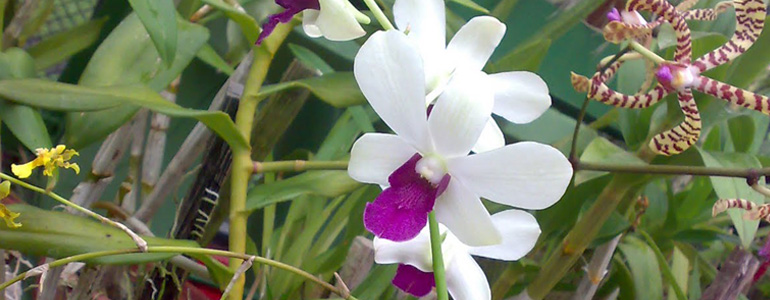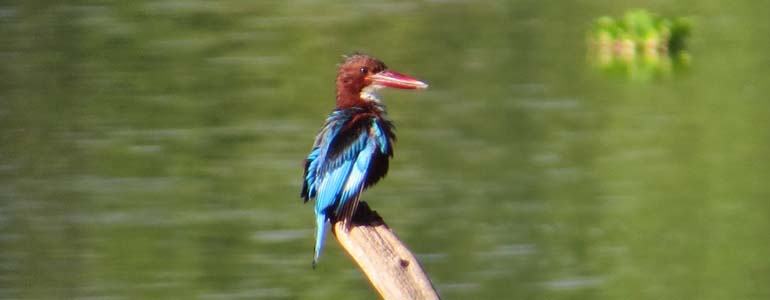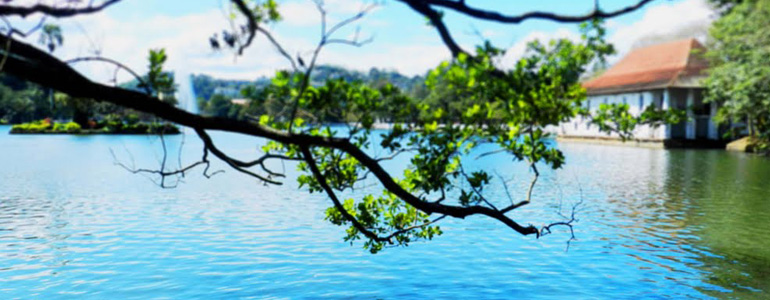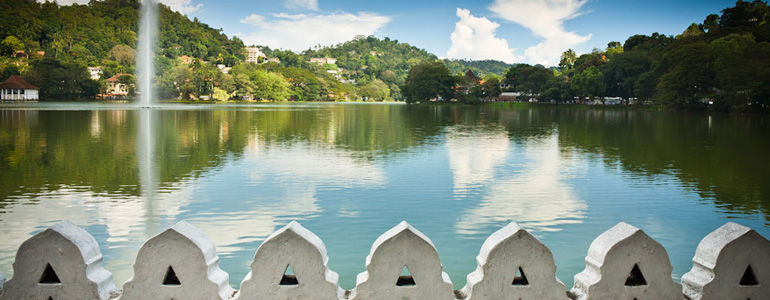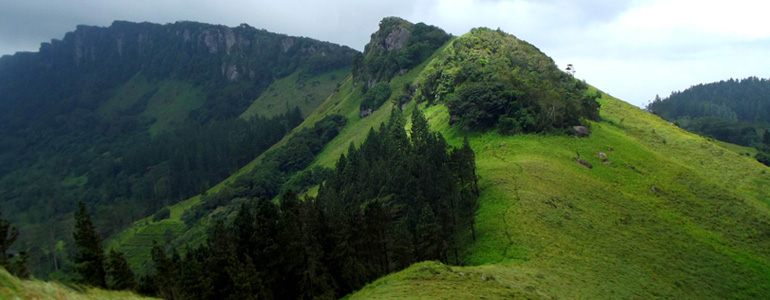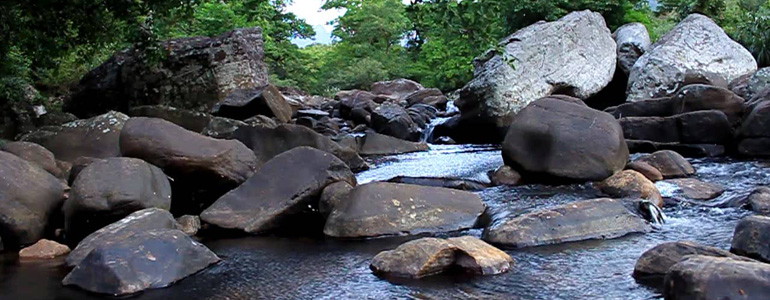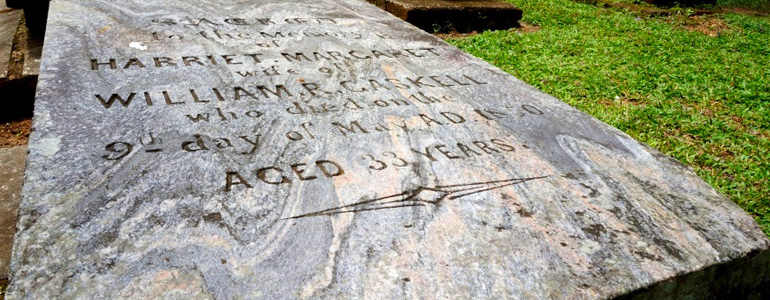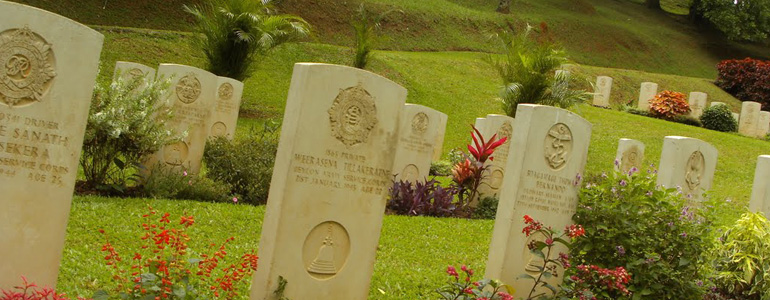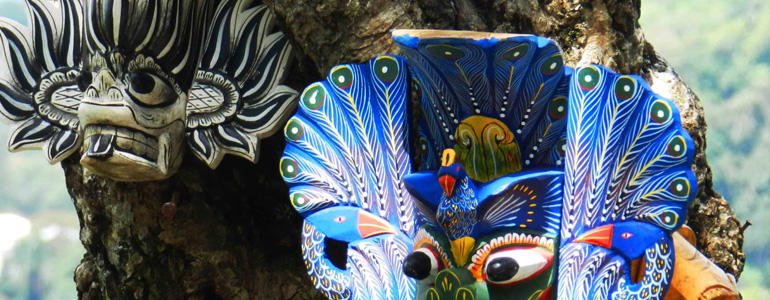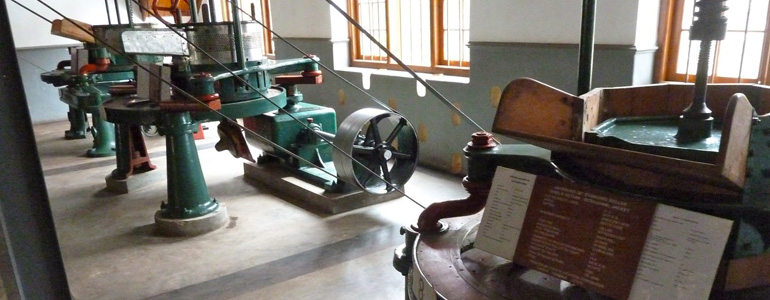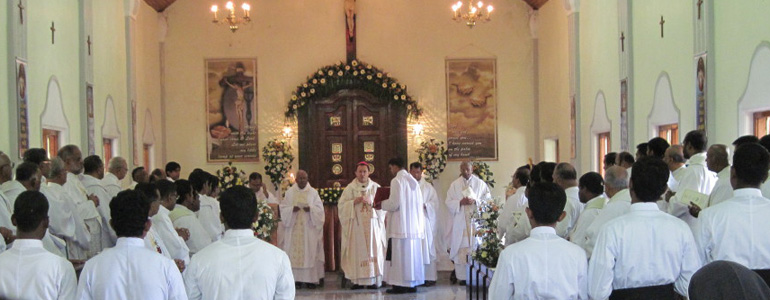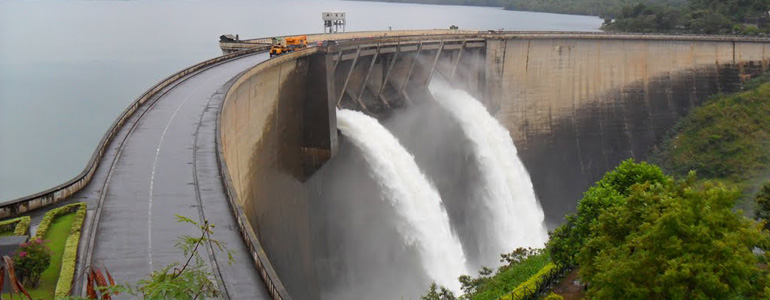Places to visit in Kandy for Nature Lovers
Hotel News Below are some places to visit near Kandy for nature lovers. Some of the require some traveling but it is relatively close to Kandy.Places to visit in Kandy for Nature Lovers
Below are some places to visit near Kandy for nature lovers. Some of the require some traveling but it is relatively close to Kandy.
Peradeniya Botanical Garden
If you are interested in well maintained landscaped garden with lots of flowers and fauna then this is a must visit place. Even if you are not interested in those things then Peradeniya gardens is a great place to relax and enjoy a leisurely walk. Because the vast grounds covered by the garden you will never feel crowded so you can take your time enjoying the various plants in the garden. There is a fantastic collection of various orchids, roses, spices and herbals. Well maintained palm trees , bamboo tress and many other various trees as well. Special guided tours for tourists are available during specified hours.
Udawattakele National park and Botanical garden
Udawattakele Sanctuary or the Royal Forest Park of Kandy is situated on the hillside behind the Dalada Maligawa or the Temple of the Tooth Relic. This forest extents about 257 acres and is considered to be a vital Bio reserve for the much populated Kandy City. The forest is rich with vegetation consisting with canopy, sub canopy and an underground layer. The dense plant life restricts sunlight reaching the ground soil surface. The underground layer mostly consists of the seedlings of the canopy layer species and creepers that reach to the top of canopy layer trees.
It is a marvelous creation of the nature, Deer’s, Hares, Squirrels and various types of beautiful birds who contribute to the natural beauty and bio-diversity of the site.
Kandy Lake
Built by the last king of Sri Lanka and Kandy, Wikrama Rajasinhe, in order to add beauty to the Temple of Tooth, Kandy Lake is an artificial construction marking a remnant of the last ever Sri Lankan kingdom.
Originally called Kiri Muhuda or the Milky Ocean, the lake has an unfinished wall called the Valakulu Bamma or clouds wall. Its incompletion is due to the arrest and imprisonment of King Wikrama Rajasinhe in 1815 when the British invaded and took Kandy. At 2060 feet, the cloud wall remains standing today in its unfinished state; the triangular holes in it are used to light oil lamps.
The lake has an island at the centre which is also an artificial creation of the king. It was initially part of a dam, which King Rajasinghe had built across the lake, but it was soon destroyed from both ends, leaving just the island in the middle.
Legend has it that this island was actually used by the King’s helm for bathing, and was connected to the palace through a secret tunnel. On one side of the lake, there is also the bathing house for the queen, called the Dalada Maligawa.
There are also many protections put in place for Kandy Lake, one of them being the prohibition of fishing. The lake has reduced considerably over the years, to having a perimeter of just less than 3.5 kilometers, although when initially built, it was much bigger than that.
Having been built on excavated paddy fields, this lake is highly protected as it’s considered extremely important in maintaining the decor of Kandy along with many auspicious stories related to it.
It has now become one of the most revered sights in Sri Lanka, especially due to the legendary stories about it and its man-made characteristics which make it a sight of wonder.
Hanthana Hills
Another attractive place you can visit in central province is Hanthana Mountain Range which is near to Kandy. The Hanthana Conservation Forest is another name for the mountain range where you can experience the Sri Lanka’s bio diversity very purely. There are 7 mountains in the mountain range and the maximum height is 3800 ft. The highest mountain is known as Uura Kanda. The mountain range is very popular among the mountain hikers in Sri Lanka as well as the foreign visitors. Annually a number of visitors are coming to Hanthana mountain range and collecting beautiful memories for their lives. Don’t forget to bring your camera when you are visiting Hanthana since in there also you can see the glory of the Sri Lanka’s nature. Not only the birds and butterflies but also you can see various types of wild flowers, insects, wild trees and many more things.
Knuckles Mountain Range
The Knuckles forest conservation which expands over Matale and Kandy district is under control of the Department of forest conservation. It is believed that the name ‘knuckles’ was assigned by the British surveyors. The mountain range gets this name as it appears like a clenched fist at a distance. Absolutely the wonderful scenery viewed from the distance is breathtakingly mysterious. Hence it is refreshing change from the hot climatic experience in Colombo.
This is a best place to relax on the way and definitely it will blow you away. The mist enveloped the peaks of the mountains seems like a haven in the forest.
The forest houses to a cluster of exclusive flora and fauna which has a great geographical value. Knuckle’s mountain range is comprised with steep slopes, thick cloud capped hill peaks, cool streams and high cascades. (December and January are the rainy season- streams get filled to the brinks) This eco tourism paradise covers an area about 155 sq, kms. Yet the mountain range is an ideal place for hiking, mountain biking and adventure trips.
The Knuckles Mountains is well known as ‘Dumbara kandu wetiya’(The Misty valley) among local people. Due to the high elevation you will have to get ready to experience a cold but cushy. But you may have to adopt various climatic conditions of Sri Lanka within the mountain area. Further it is a good place for environmental enthusiasts to visit traditional small mountain houses. Though the area was called ‘Giri Divaina’ and as ‘Malaya rata’ recently used and accommodated by the ancient ‘Yaksha’ tribes. Even today the villagers together with about over 2000 years old historical background are living together. Meemure, kaikawala and Galamuduna are just few of the 37 villages in the Knuckle’s site.
By the way they are successfully survived with their day to day life styles by adopting the environment and engaging with farming, Chena cultivations and paddy cultivations. Though the average annual rainfall lies about 3000-5000 ml, the average temperature is approximately 25° C. beautiful waterfalls with their full force of water downsides to the Mahaweli River are running through the jungle. Namely Hulu ganga, Kalu ganga and Heen ganga are begun from the knuckle’s mountain range. So many eco tourists and nature lovers explore the entire area for studies, researches and adventures. Certainly you will marvel at this nature’s gift cause of the bio diversity, botany, biology and ecological zones.
Kandy Garrison Cemetery
British Garrison Cemetery (also known as the Kandy Garrison Cemetery) is a British cemetery in Kandy, Sri Lanka, for British nationals who died in Ceylon. It was established in 1817 just after British captured the Kandy and closed in 1873 due to a ban on burials within the municipal limits, although special provision was given to allow the burial of relatives of those interned in the cemetery, with last person buried there being Annie Fritz in 1951. The cemetery contains 195 graves of men, women and children. The most common causes of death were tropical diseases such as malaria and cholera.
The cemetery was restored in 1998 using financial contributions from the Commonwealth War Graves Commission and is currently maintained by a group called 'The Friends of the British Garrison Cemetery in Kandy’. The cemetery is located close to National Museum of Kandy.
Kandy War Cemetery
Formerly known as Pitakande Military Cemetery, it was acquired originally by the military authorities, and was subsequently taken over by the Commission as a permanent war cemetery.
The Army Graves Service transferred to this cemetery service war graves from Divatalawa Boer Military Cemetery; (including graves which had previously been moved from Divatalawa Camp Cemetery and Diyakaduwa Cemetery and from Bandarawala in the Punjab); Galkissa General Cemetery; Ihala Vitiyala Burial Ground; Kandy Civil Cemetery; Kollonawa Burial Ground; Kotagala Forest Creek Cemetery; Mahaiyawa Cemetery; Murugampola Cemetery; Rawatawatte General Cemetery, Moratura; Tibotugoda Etakorasa Cemetery and Trincomalee Hindu and Buddhist Cemetery. In 1958 the Commission moved in two graves from Kandy Civil Cemetery where permanent maintenance could not be assured.
The Special Memorial commemorates a naval man known to have been buried in the cemetery but whose grave could not be precisely located. It bears the superscription "Buried near this spot". There is 1 Commonwealth burial of the 1914-1918 war and a further 196 Commonwealth burials of the 1939-1945 war commemorated here. In addition there are 4 Foreign National and 2 non world war burials.
From the Botanical Gardens at Peradeniya, take the road to Kandy. Just past the gardens, take a left turning at the roadside direction sign, down Lady Magdalene Drive. The Cemetery is approximately 1.5 kilometers along this road.
Kandy - View Point
Kandy view point is located at Rajapihilla Mawatha near Kandy Lake. Around 1km steep climb to the rajapihilla mawatha, there is a place where you see the Kandy city in a panoramic view. With lake and Sri Dalada maligawa very famous tourist location. Restaurants and souvenir shops are around the location. Vehicle parking is limited. Street sellers can be a nuisance in this place.
Tea Museum at Hantana
The Tea Museum at Hantana is the best place to see the memorabilia, machinery, books, pictures and objects of historical value to the Tea Industry of Sri Lanka and the origin of the fine brew 'Ceylon Tea'. Built in 1925, the spacious four storied Tea Factory, has been cleverly converted to a Museum by the Sri Lanka Tea Board and the Planters' Association of Ceylon and has become a major tourist attraction. Today it stands as a proud monument to the success story that is Ceylon Tea.
Located five km from Kandy, a motor able road that circles the factory, providing easy access to the premises. The factory building consists of four floors; the ground accommodates heavy machinery, the first floor occupies some examples in the withering process. The Library and the audio-visual presentations are conduction in the second floor while the sales outlets are found in the third floor. The fourth floor is to be converted to a deluxe restaurant.
Monte Fano
FIRST FOUNDATION IN SRI LANKA: 14th August 1845
The Benedictine presence came to Sri Lanka when the Sylvestrine monks came as missionaries under the auspices of Propaganda Fidei in August 1845. The first monk to set foot in Sri Lanka was Fr.Giuseppe Maria Bravi who was soon joined by other confreres. The southern vicariate of Colombo was entrusted to the monks in 1857 and Mgr.Bravi became the first European Vicar Apostolic. At the request of the monks, the Colombo vicariate was divided and the monks took charge of the new diocese of Kandy in 1883. The monastery church in Kandy became the Cathedral of the new diocese. The monastery of Monte Fano was established in 1927 primarily as a formation house. in 1972 the responsibility for the diocese was handed over to the diocesan clergy and the monastery church in Kandy was given to the diocese. This left Monte Fano as the main monastery of the Sylvestro Benedictine Priory in Sri Lanka. Today the Congregation has five monastic communities - three in parishes and the remainder are engaged in various types of apostolic activities.
The Victoria Dam
The Victoria Dam is located across the Mahaweli ganga immediately upstream of the Victoria falls rapids at about 130 miles from the river mouth. The site is about 72 aerial miles east of Colombo. 4 miles from Teldeniya and 6 miles from the haven home stay bungalow. There is a good road from Colombo to Teldeniya distance about 84 miles. The present access from Teldeniya to the site is along the jungle track 4 miles long. The nearest railway station is Kandy.

